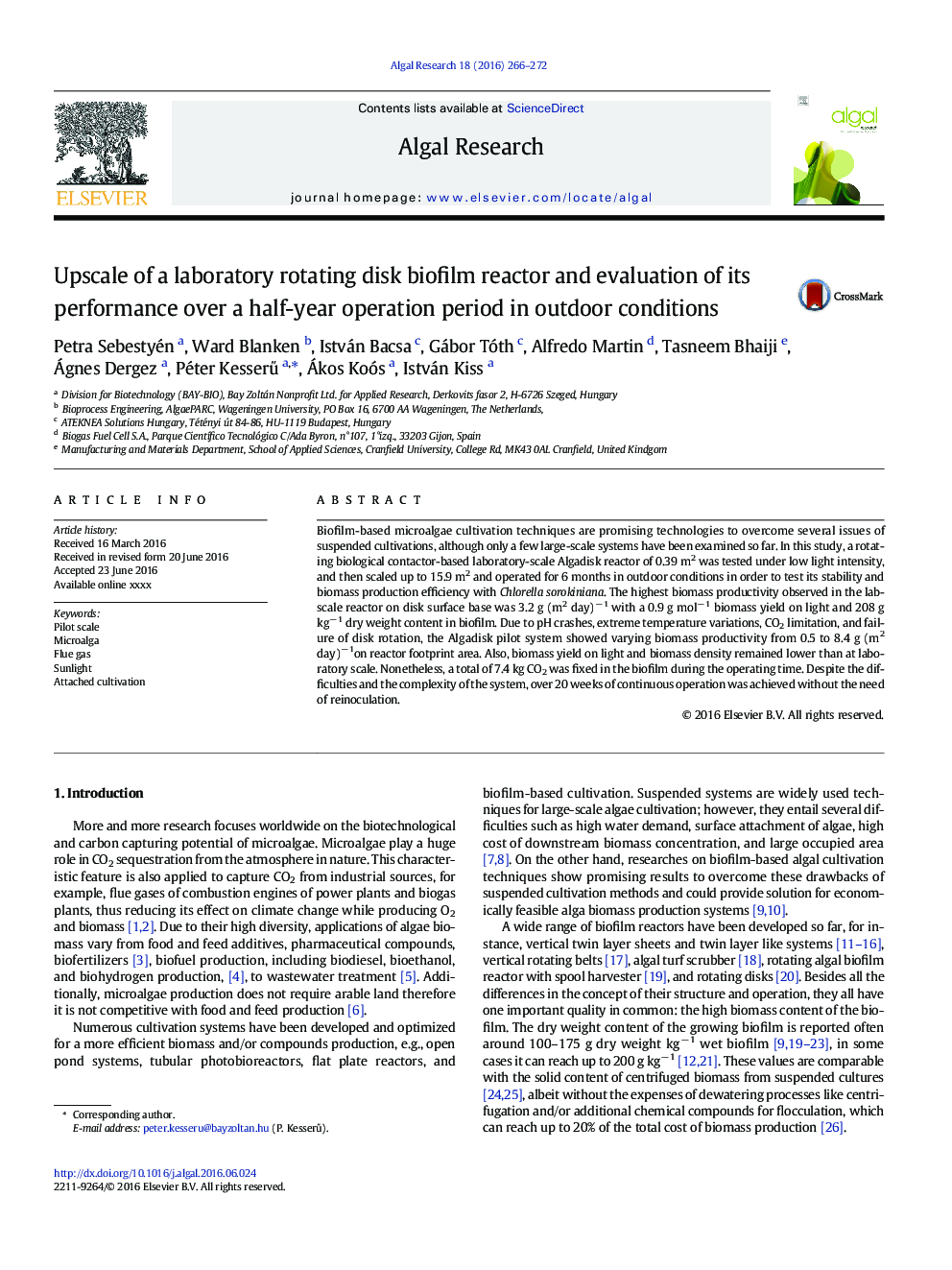| Article ID | Journal | Published Year | Pages | File Type |
|---|---|---|---|---|
| 8086686 | Algal Research | 2016 | 7 Pages |
Abstract
Biofilm-based microalgae cultivation techniques are promising technologies to overcome several issues of suspended cultivations, although only a few large-scale systems have been examined so far. In this study, a rotating biological contactor-based laboratory-scale Algadisk reactor of 0.39 m2 was tested under low light intensity, and then scaled up to 15.9 m2 and operated for 6 months in outdoor conditions in order to test its stability and biomass production efficiency with Chlorella sorokiniana. The highest biomass productivity observed in the lab-scale reactor on disk surface base was 3.2 g (m2 day)â 1 with a 0.9 g molâ 1 biomass yield on light and 208 g kgâ 1 dry weight content in biofilm. Due to pH crashes, extreme temperature variations, CO2 limitation, and failure of disk rotation, the Algadisk pilot system showed varying biomass productivity from 0.5 to 8.4 g (m2 day)â 1on reactor footprint area. Also, biomass yield on light and biomass density remained lower than at laboratory scale. Nonetheless, a total of 7.4 kg CO2 was fixed in the biofilm during the operating time. Despite the difficulties and the complexity of the system, over 20 weeks of continuous operation was achieved without the need of reinoculation.
Related Topics
Physical Sciences and Engineering
Energy
Renewable Energy, Sustainability and the Environment
Authors
Petra Sebestyén, Ward Blanken, István Bacsa, Gábor Tóth, Alfredo Martin, Tasneem Bhaiji, Ágnes Dergez, Péter Kesserű, Ákos Koós, István Kiss,
